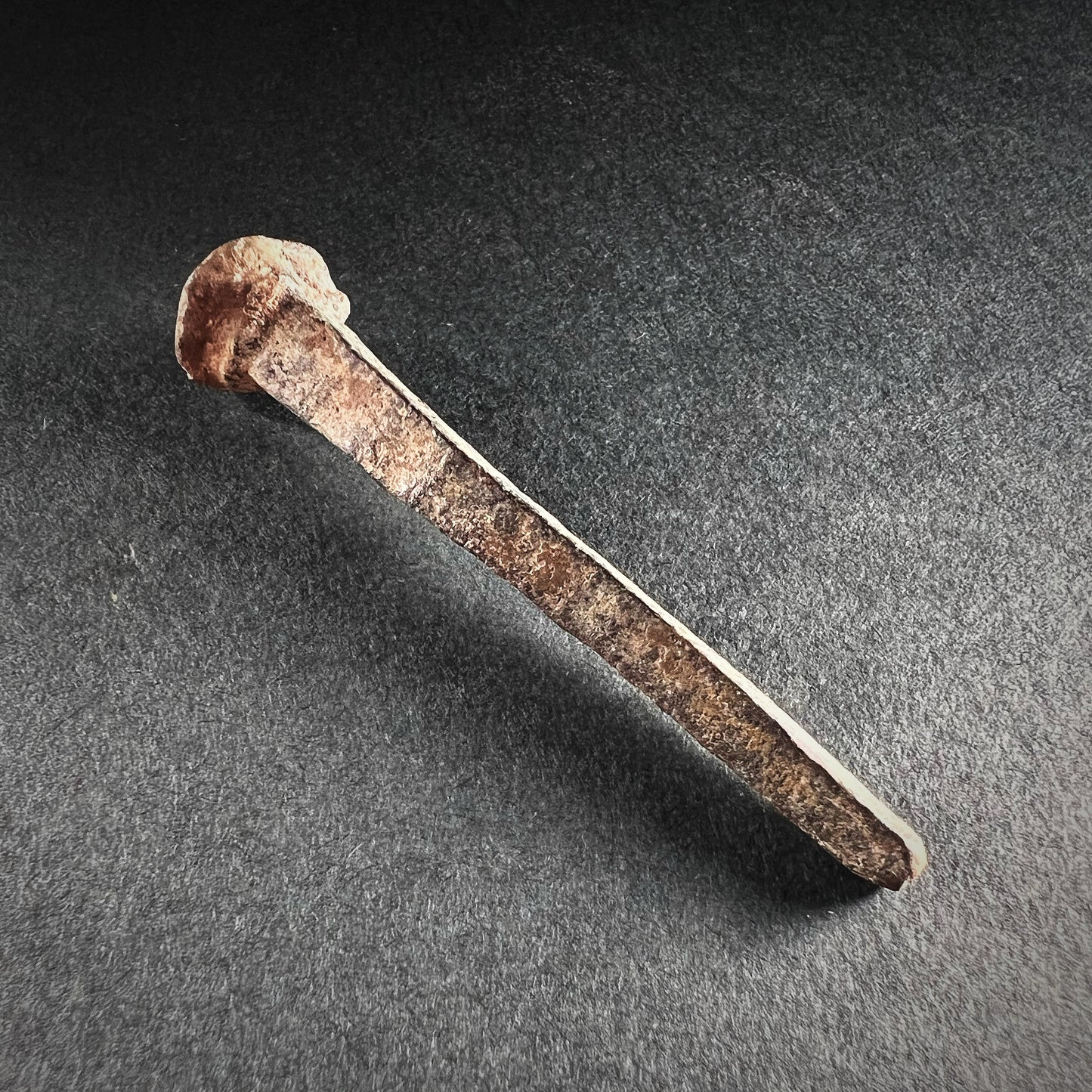Roman Bronze Nail
Roman Bronze Nail
Couldn't load pickup availability
The Roman Empire, c. 100–300 AD
A fascinating ancient Roman nail, cast in bronze, featuring a conical head and a four-faceted, slightly bent shaft tapering to a worn point. Roman nails of this type were meticulously crafted by legionary metalworkers in their workshops (fabricae), who smelted ore and hand-forged square-section nails with flattened, pyramid-shaped heads. Larger examples were used in the construction of wooden fortifications and roofs of military structures.
Archaeological finds, such as the cache of seven tons of iron nails discovered at the Roman fortress of Inchtuthill in Perthshire, Scotland—abandoned in 86–87 AD—testify to their vast production and essential role in Roman engineering.
Beyond their utilitarian purpose, nails also held ritual and symbolic significance in the Roman world. Some were inscribed with magical formulas or placed at shrines and doorways for protection. The Roman custom of the “clavus annalis” (annual nail) and the use of curse tablets (tabellae defixionum) reflect their role in ritual magic. Nails recovered from tombs or crucifixion sites were sometimes even worn as talismans, believed to ward off fever, malaria, and malevolent forces.
A remarkable object that encapsulates both the technical ingenuity and spiritual complexity of Roman civilization.
Good condition. Surface wear and abrasions commensurate with age and use. A fine green patina envelops in layers of mottled grayish hues. Mineral encrustation and minimal corrosion. Size approx. 6,0cm x 1,1cm x 0,6cm.
Provenance: Danish private collection.
For a similar examples see:
Copper alloy nail, Ashmolean Museum, University of Oxford, Accession Number: AN1871.111 (https://collections.ashmolean.org/object/587615)
Nail, The Metropolitan Museum of Art, Accession Number: 74.51.5364 (https://www.metmuseum.org/art/collection/search/244243)
Nail, The British Museum, Accession Number: 1975,0723.11 (https://www.britishmuseum.org/collection/object/G_1975-0723-11)
References and further reading:
Mystifying Roman Nails: Clavus Annalis, Defixiones and Minkisi, David Dungworth, Theoretical Roman Archaeology Journal, 1997, pp: 148–159 (doi: https://doi.org/10.16995/TRAC1997_148_159)
Magical practices? A non-normative Roman imperial cremation at Sagalassos, J. Claeys, K. Van de Vijver, E. Marinova, S. Cleymans, P. Degryse & J. Poblome, Antiquity, 2023; 97(391): 158-175. (doi:10.15184/aqy.2022.171)
In a Roman Tomb, ‘Dead Nails’ Reveal an Occult Practice, Franz Lidz, The New York Times, Science, March 25, 2023. (https://www.nytimes.com/2023/03/25/science/archaeology-ancient-rome-tomb.html)


-
Shipping
The shipment will be prepared in the course of 3-5 days and dispatched via Posti Group Oyj or purchased item(s) can be picked up from our shop during the store's opening hours (Tarkk’ampujankatu 4, 00140, Helsinki, Finland). Within the Finland, all items are shipped via Posti Group Oyj unless otherwise requested. We pack the items carefully and mainly in recycled materials because we want to save nature. You will receive the tracking number for your items by e-mail.
-
Returns
Returns and exchange will be accepted within fourteen days (14) of receipt at the purchaser’s cost to include freight and packaging. Items must be returned in the same condition as when they were shipped, and will not be accepted if damaged or altered in any way. Please inform us via email (info@gotanmaailma.fi) or by calling +358408408352 before sending. We do not accept returns more than 14 days after delivery.


